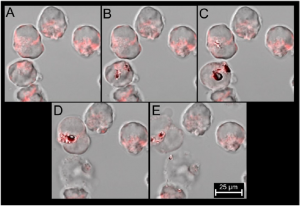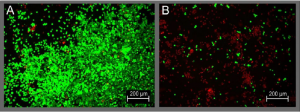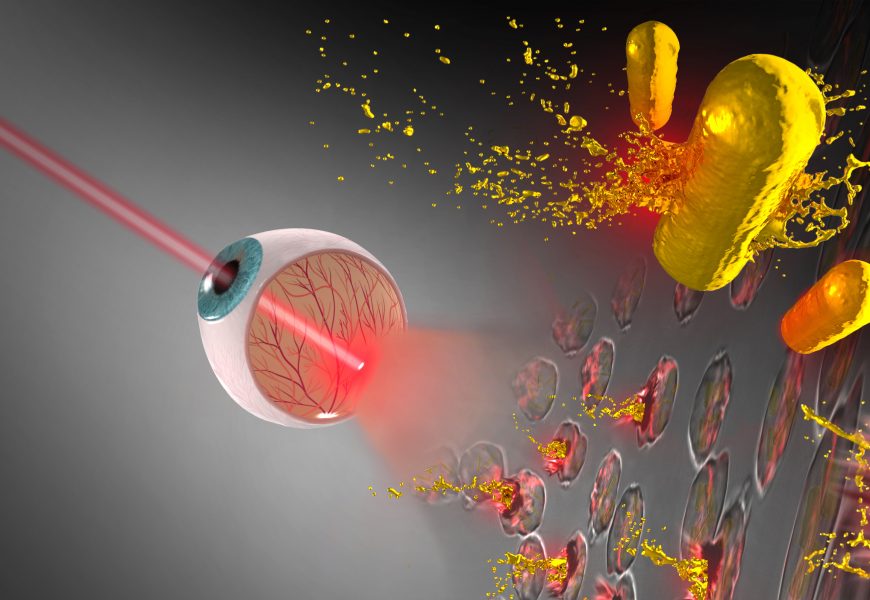Retinoblastoma is a disease that primarily affects young children. As the name suggests, it is a cancer of the retina, and while most patients survive the illness, oftentimes sight in the affected eye is lost. One of the reasons for this, is that the ability of retinal cells to regenerate is quite poor. Any treatment for retinoblastoma that aims to preserve vision must be extremely selective.

Time lapse of cells containing gold nanoparticles on exposure to laser pulses
Correctly sequenced laser pulses can heat up nanoparticles by hundreds of degrees, and this energy dissipates over a very short distance. Such localized intense heat might be useful in the selective destruction of cancer cells, if the nanoparticles were able to selectively accumulate in the appropriate regions. With this in mind, a group from Canada recently reported a new technique for destroying retinoblastoma cells.
Gold nanoparticles were coated with a compound called ‘epithelial cell adhesion molecule’. This chemical was used to direct the nanoparticles to cancer cells in vitro. With the nanoparticles in the desired location, the team ran a large number of experiments to determine the ideal sequence and length of the laser pulses.

A) Shows live cells (green) without nanoparticles after laser exposure, B) Shows live cells with nanoparticles after laser exposure.
With a protocol in hand, the team ran a series of biological assays to show that cancer cell viability drops to 10% after a single cycle of nanoparticle/laser treatment. Notably, the energy required to achieve this effect is less than the threshold for causing damage to optical systems. The heat generated was sufficient to melt the nanoparticles (hence the exploding gold in the feature image), but dissipates over a distance of about ten nanometers, suggesting that healthy cells might not be affected by this procedure.
There is still a great deal of research to be done before this technique might be a viable treatment for retinoblastoma. Nanoparticle based therapies are challenging to apply in-vivo, due to circulatory immune clearance. A PEG coating was used on these nanoparticles that has been shown to improve circulatory times, but further tests are required to determine its effectiveness in this context.
This research is featured on the cover of the 1st issue of Advanced Therapeutics.

















